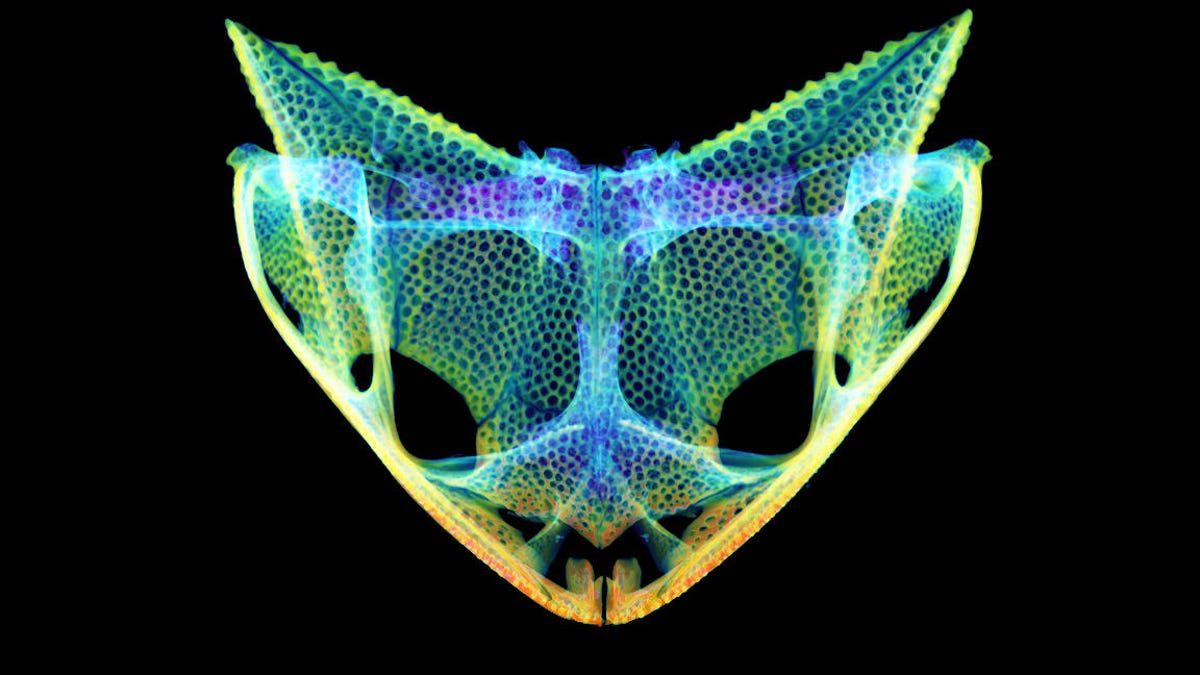Frogs have evolved extreme skulls with hidden fangs and horns
All the better to head-bang with.

It looks like a Pokémon skull, but this thing is real.
Some humble frogs may have more hiding beneath their moist, slick skin than may appear -- namely, horns, spikes and fangs that make up their surprisingly unconventional skulls.
In a truly metal development, 3D scans have revealed that although most frogs subscribe to the smooth skull shape you'd likely expect, others have evolved extreme, unusual skulls with crests and armorlike fortifications.
The study that references the scans, published Monday in the journal Proceedings of the National Academy of Sciences, forms part of the National Science Foundation-funded oVert project, which seeks to digitize and catalog vertebrate anatomical data.
"Superficially, frogs may look similar, but when you look at their skulls, you see drastic differences," Daniel Paluh, lead author and doctoral student at the University of Florida, said in a statement.
"Some of the weirdest skulls are found in frogs that eat birds and mammals, use their heads as a shield, or in a few rare cases, are venomous. Their skulls show how strange and diverse frogs can be," Paluh said.
The team analyzed skull shapes from 158 species (across all living frog families), revealing that extra layers of bone were present in all the unusually shaped skulls, in the form of ridges, grooves and layers -- a process called "hyperossification," or excessive bone formation.
Though habitat can be isolated as one of the key reasons some frogs will develop this trait and others won't, additional reasons are still a matter of speculation.
Limnonectes dabanus showing off its extra large head.
Jodi Rowley, a biologist with the Australian Museum Research Institute who specializes in amphibians, suggests it could very well be due to factors like fighting, mating and defending territory.
"There's so much we don't know about evolution and adaptation in frogs, but it's likely that these crazy skulls evolved in different ways for different species," Rowley said. "Some features may have also evolved due to other pressures -- perhaps 'fangs' [were] for eating, but became useful and exaggerated for other purposes (i.e. fighting)."
The result is an array of horned, crested and fanged frogs that, skeletally, are a far cry from the smooth-skulled green frogs we've come to see in popular culture.
"Some of the adaptations are remarkable," said Rowley. "From the 'fangs' that Southeast Asian Fanged Frogs (Limnonectes sp.) fight each other with, which are actually bone projections, to the elaborate spikes on the skulls of Casque-headed Tree Frogs (Corythomantis greeningi), that actually deliver venom."
"We've got so much to learn about frogs that most of this is speculation -- exciting speculation though! Every bit of research that is published that sheds light on frogs and their evolution or adaptation helps us better understand and hopefully conserve these unique and often threatened animals."

